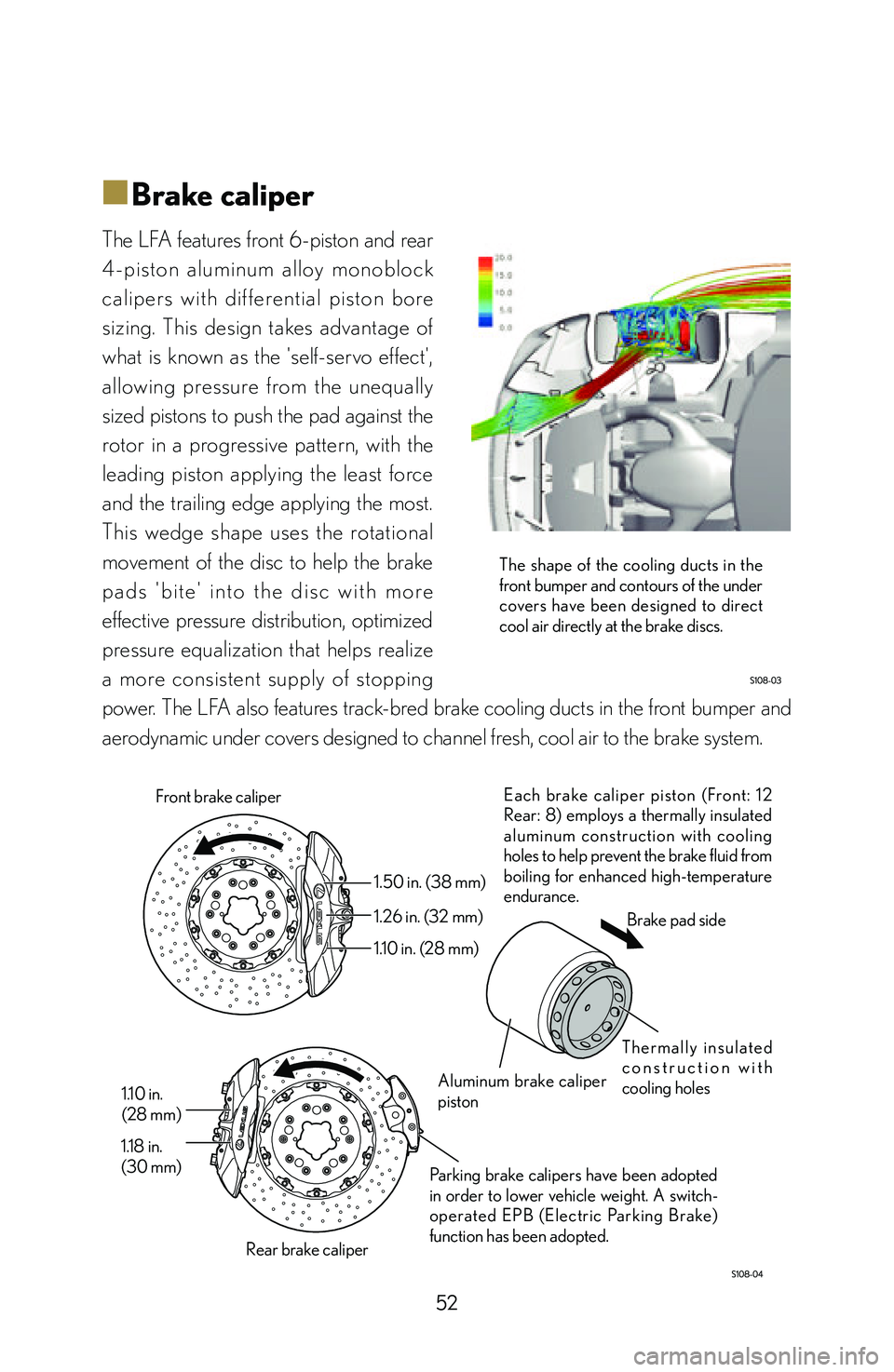Page 41 of 128

39
Shifting
■
■Rear transaxle
The LFA’s gear change mechanism consists of a parallel two-shaft layout often used
in modern manual transmissions. In the LFA, the transmission and differential are
integrated and placed near the rear axle, thus realizing a rear transaxle configuration.
Gear shift and select commands are sent by the ECU to a hydraulically operated shift
mechanism for fast and precise operation.
To ensure ample strength and the ability to handle the engine’s broad torque curve,
various areas throughout the transaxle have been reinforced and high-capacity three-
point contact bearings have been adopted. Furthermore, each synchronizer ring
employs a high-friction carbon material to realize quicker engagement and faster
shifts. Additionally, the teeth of all speed gears have been micro-polished for precise
engagement and reduced gear whine.
The transaxle employs its own oil pump and oil cooling system to ensure a constant
supply of oil at a stable temperature even under demanding endurance conditions.
3rd 6th 5th 2nd 1st
Support bearings
Regarding synchronizers, 1st through 4th gears employ triple-cone units while 5th and 6th
gears are double-cone. A TORSEN
® LSD (Limited Slip Differential) with a specific amount
of preload dialed in has been adopted to ensure excellent traction and handling stability.
TORSEN
® LSD is a registered trademark of JTEKT. 4th
Page 54 of 128

52
■
■Brake caliper
The LFA features front 6-piston and rear
4-piston aluminum alloy monoblock
calipers with dif ferential piston bore
sizing. This design takes advantage of
what is known as the 'self-servo effect',
allowing pressure from the unequally
sized pistons to push the pad against the
rotor in a progressive pattern, with the
leading piston applying the least force
and the trailing edge applying the most.
This wedge shape uses the rotational
movement of the disc to help the brake
p a d s ' b i t e ' i n t o t h e d i s c w i t h m o r e
effective pressure distribution, optimized
pressure equalization that helps realize
a more consistent supply of stopping
power. The LFA also features track-bred brake cooling ducts in the front bumper and
aerodynamic under covers designed to channel fresh, cool air to the brake system.
Each brake caliper piston (Front: 12
Rear: 8) employs a thermally insulated
aluminum construction with cooling
holes to help prevent the brake fluid from
boiling for enhanced high-temperature
endurance.
Parking brake calipers have been adopted
in order to lower vehicle weight. A switch-
operated EPB (Electric Parking Brake)
function has been adopted.
1.50 in. (38 mm)
1.26 in. (32 mm)
1.10 in. (28 mm)
1.10 in.
(28 mm)
1.18 in.
(30 mm) Front brake caliper
Rear brake caliper Aluminum brake caliper
piston
T h e r m a l l y i n s u l a t e d
c o n s t r u c t i o n w i t h
cooling holesBrake pad side
The shape of the cooling ducts in the
front bumper and contours of the under
covers have been designed to direct
cool air directly at the brake discs.
Page 81 of 128

79
Maintaining the vehicle’s exterior
When washing the vehicle, be careful not to
touch the hood grilles, bezels in the radiator
grilles, or exhaust pipes and surrounding
area until they have cooled sufficiently, as
these components may cause burns.
• Do not apply water to the inside of the engine compartment. Doing so may cause the
electrical components etc. to catch fire.
• Do not flush water over or into the hood grilles (especially the arrowed portion in the
illustration).
• Do not flush water over or into the exhaust pipes and surrounding area or the bezels in
the radiator grilles until they have cooled sufficiently.
When using a high-pressure washer
• Do not aim the head of the nozzle at the hood grilles or radiator grilles. Doing so may
negatively affect the engine or cause a malfunction in the electric cooling fan motors that
may result in overheating.
• Do not allow the nozzles of the car wash to come within close proximity of the windows
or rear hatch.
Do not use automatic car washes as they may scratch the vehicle body and damage
the paint.